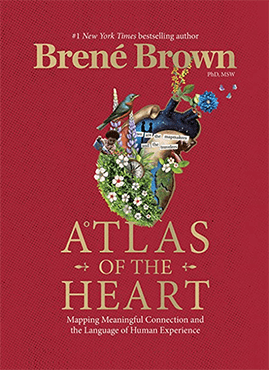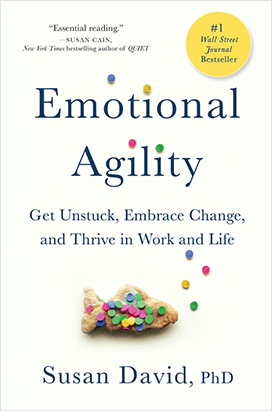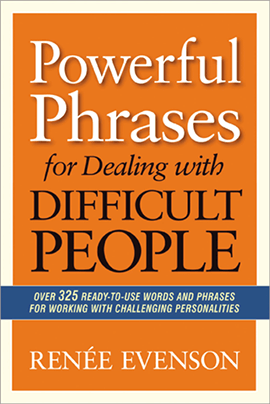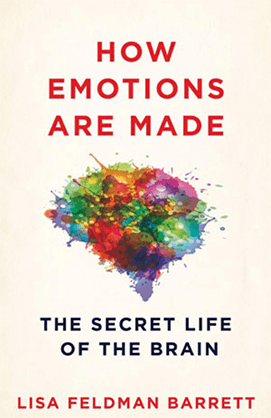
Click the button to start reading
Who Else Wants a High EQ? The Best Books on Emotional Intelligence
How many different emotions would you say you experience on a given day? And do you make a distinction between feeling happy and feeling joyful?
What about reading other people: Can you tell by the twitch in someone’s eye whether she’s annoyed or surprised? And can you detect the glimmer that communicates enthusiasm?
For most of us, answering these questions is a struggle.
Yet emotions are central to our lives. They spur us to action. When we’re feeling sleepy, we may take a nap. If we’re excited, we might pop open a beer. Strong emotions like anger and fear can even overpower intelligence and reason when making decisions.
And so it pays to develop a high emotional intelligence, or EQ.
What is emotional intelligence, exactly? The concept developed in the 90s, widely propagated by Daniel Goleman’s book, Emotional Intelligence: Why It Can Matter More Than IQ. He broke emotional intelligence down into four areas:
- Self-Awareness: Knowing how you’re feeling during the day.
- Self-Management: Achieving goals and adapting to situations.
- Social Awareness: Reading other people and empathizing with them.
- Relationship Management: Coaching, inspiring and building teams.
People with strong emotional intelligence face the twists and turns of life with agility. They build rapport with others, monitor their negative emotions, and maintain equilibrium even amidst stress and difficulty.
On the other hand, people with low emotional intelligence manage time poorly and struggle to achieve long-term goals. They rarely appreciate different points of view and fail to rally and lead teams.
Do you aspire to live a balanced life, to handle conflict constructively and to navigate tricky work and personal relationships with ease? Then settle in. We’re looking at the best books on developing emotional intelligence.
Atlas of the Heart: Mapping Meaningful Connection and the Language of Human Experience by Brené Brown
 Publisher: Random House
Publisher: Random House
Year Published: 2021
Number of Pages: 336
Around 15 years ago, Brené Brown had an epiphany. She looked at the results of 7,000 surveys from her shame resilience workshops, and found that nearly all the respondents expressed feedback with only three emotions: happy, sad and angry.
This, according to Brown, is a problem. She believes that discerning and communicating with a range of emotions improves what we receive, what we ask for and what we experience. In essence, emotional granularity; our ability to accurately recognize and label emotions; improves our overall well-being.
“Language is our portal to meaning-making, connection, healing, learning and self-awareness. Having access to the right words can open up entire universes. When we don’t have the language…our ability to make sense of what’s happening and share it with others is severely limited.”
With Atlas of the Heart, Brown aims to increase our vocabulary around emotions and so enrich our lives and world. The book serves as a valuable resource for someone looking to improve emotional intelligence by developing emotional granularity.
The book is a remarkably original conceit. It catalogues over eighty emotions, grouping them into how we feel in certain circumstances.
The chapters include: “Places We Go When…..We Compare, When Things Are Uncertain, When Things Don’t Go as Planned, When It’s Beyond Us, When We’re Hurting, When Things Aren’t What They Seem, With Others, When We Fall Short, When Life Is Good, When We Feel Wronged, To Self-Assess.”
Some of the 87 emotions she breaks down include: joy, happiness, calm contentment, shame, self-compassion, perfectionism, guilt, humiliation, anguish, despair, grief, amusement, nostalgia, cognitive dissonance and paradox.
With each emotion, Brown offers a definition, then shares insights into what we commonly think the emotion means, and what she believes it really means.
The book’s layout includes collages with sayings like: “We are the mapmakers and the travelers.”
Brown has been writing about emotion since she was in college. She regularly speaks on courage, vulnerability, shame and empathy, and her TEDx talk, “The Power of Vulnerability” ranks amongst the most popular of all time. She’s a professor at the University of Houston, and has written five New York Times bestselling books.
Although some feel that Brown talks down to her readers, other readers believe Atlas of the Heart is a powerful tool for improving emotional intelligence and our relationship with ourselves and others.
What Happened to You?: Conversations on Trauma, Resilience, and Healing by Oprah Winfrey & Bruce D. Perry
 Publisher: Flatiron Books
Publisher: Flatiron Books
Year Published: 2021
Number of Pages: 304
Given Oprah Winfery’s humble origins, born to unmarried parents and raised by a grandmother, it’s hard to believe she rose to such a level of status, fame and wealth.
Oprah begins her book What Happened to You with childhood recollections growing up on a farm with her grandmother Hattie Mae, and later living between a father in Nashville and a mother in Milwaukie. Between daydreaming and going to Church, she also recalls being “whupped” for slight things like spilling water.
“The most pervasive feeling I remember from my own childhood is loneliness…I always felt like a burden, and an ‘extra mouth to feed.’ I rarely remember feeling loved.”
This #1 New York Times bestselling book communicates that the way we are, the way we function in the present, is largely determined and shaped by our experiences from the past.
“Seemingly senseless behavior makes sense once you look at what is behind it,” the authors assert.
Authors Oprah Winfrey and Dr. Bruce D. Perry dedicate their book to victims of trauma, to people who want to understand themselves better and to people who’ve been called a “people pleaser,” “self sabotager,” “checked out,” “can’t hold a job” and “bad at relationships.”
Although it includes many stories of heart-wrenching trauma, this book is helpful for someone who struggles with emotions they don’t understand and can’t control.
Abstract blue and green watercolor images placed throughout reflect the book’s empathetic tone. It also includes helpful visuals, such as a model of the brain broken down into the cortex, limbic, diencephalon, and brainstem.
The authors trade off sharing insights; Perry’s comments appear in black text, and Oprah’s in blue. Some readers have found the blue text difficult to read.
Oprah Winfrey is a media icon and host of the top-rated Oprah Winfrey Show. Dr. Perry is a child psychiatrist who works with abused children. He’s also Senior Fellow of the Child Trauma Academy.
Readers find the book speaks to their experience, and heartily agree with the book’s message that in order to understand our behavior today, we need to look in the rearview mirror.
Emotional Intelligence: Why It Can Matter More Than IQ by Daniel Goleman
 Publisher: Bantam
Publisher: Bantam
Year Published: 2020
Number of Pages: 384
“In a very real sense, we have two minds, one that thinks and one that feels,” Daniel Goleman writes in his book, Emotional Intelligence.
Emotions have a wizard-like quality. At times, they overwhelm our intelligence and reason.
“When it comes to shaping our decisions and our actions, feeling counts every bit as much—and often more—than thoughts…for better or for worse, intelligence can come to nothing when the emotions hold sway.”
Using compelling anecdotes, Goleman takes a look at everything we understand about our brains in an effort to understand seemingly senseless behaviors.
Many of the emotions we feel around anxiety and fear are the result of patterns developed from bygone eras. “All emotions are, in essence, impulses to act, the instant plans for handling life that evolution has instilled in us.”
We need an integrated understanding of ourselves to make sense of our actions and to behave reasonably. His book helps the reader become more capable of reacting to situations with emotional intelligence.
Goleman first published this book in 1994, and has been credited with propagating the term “emotional intelligence.” In this 25th Anniversary edition, he aims to clear up several misconceptions that have developed around the concept.
One misconception is that EQ accounts for 80% success in work; this number may really be as low as 20%. Another is that a high EQ means someone is nice. Rather, EQ is about handling conflict and knowing your own emotions, and so someone who’s gruff or domineering can have a high EQ.
In addition to this book, Goleman has several other bestselling books under his belt, including Working with Emotional Intelligence and Social Intelligence.
Readers have found Emotional Intelligence helpful for a variety of contexts, including dealing with the opposite sex and overcoming chronic negativity. Some found parts of the book to be slow, but appreciate the overall message.
Emotional Agility: Get Unstuck, Embrace Change, and Thrive in Work and Life by Susan David
 Publisher: Avery
Publisher: Avery
Year Published: 2016
Number of Pages: 288
Have you ever considered the lapse of time between when someone steps on your toe and when you scream “ouch”?
Although sometimes our physical reaction to emotions are nearly instantaneous, at other times there’s a significant gap between when we feel an emotion and when we respond.
Navigating this gap and choosing an appropriate response is the focus of Susan David’s book, Emotional Agility.
We steer our lives with emotions, she says. “Signs of danger, hints of romantic interest, cues that we’re being accepted or excluded by our peers” are the starting points for making choices and developing plans of action.
Yet we can’t entirely allow emotions to inform our actions. Surrendering to them easily leads to dead ends and dark places, such as throwing a drink in a coworker’s face or blocking a friend on social media.
Her book discusses how to identify and then process emotions. With emotional agility, David promises, we can navigate depression, heartbreak, periods of transition and reap a dynamic, productive lifestyle.
Often we’re stuck in patterns of behavior that served us once but no longer have a purpose.
“Rigid reactions may come from buying into the old, self-degrading story you’ve told yourself a million times….Emotional agility is about loosening up, calming down, and living with more intention. It’s about choosing how you’ll respond to your emotional warning system.”
Her book captivates the reader right away, with a cleverly written story about a ship captain who stubbornly refuses to alter his position to what he presumes is an oncoming ship. He changes course when he’s informed it’s a lighthouse.
The book continues in this engaging style, incorporating stories and personal anecdotes to illustrate messages.
David is a psychologist and executive coach who has spent two decades studying emotions and their impact on our behavior. She’s on faculty at the Harvard Medical School and has worked with the World Economic Forum. Her work is featured in many publications, including The Wall Street Journal.
Readers find that Emotional Agility includes a good combination of stories and research, and is worth your while whether you struggle with emotions or not.
Thinking, Fast and Slow by Daniel Kahneman
 Publisher: Farrar, Straus and Giroux
Publisher: Farrar, Straus and Giroux
Year Published: 2011
Number of Pages: 512
Have you ever sensed anger or frustration in another person, but a friend or companion sensed a different emotion entirely?
How do you account for this disparity?
In his book Thinking, Fast and Slow, Daniel Kahneman observes that we often make decisions based on intuition. If we hear annoyance in someone’s voice, for example, we decide against asking them for a favor.
He also posits that intuitive judgements aren’t always correct. The mind uses heuristics, rather than statistics, to make decisions, which can lead to errors.
“We easily think associatively, we think metaphorically, we think casually, but statistics requires thinking about many things at once.”
Due to our unreliable judgment, we benefit from observation and correction from others. With his book, he hopes to mitigate the fallout from faulty intuitive decisions by improving the precision of our language in this area.
Thinking, Fast and Slow presents theories and research. It’s good for people who enjoy science. It doesn’t include many takeaways to apply in the here and now, however.
To develop many of his ideas, Kahneman corroborates with Amos Tyversky, an expert in decision research. They draw on recent discoveries in cognitive research.
At over 500 pages, Thinking, Fast and Slow covers a lot of ground. Some readers have found that it’s too wordy, but believe his advice is helpful for people making life decisions, especially around money and risk.
Kahneman is an Israeli-American who’s researched judgement and decision-making for over a decade. He also consults businesses and philanthropists. In 2002, he received the Nobel Memorial Prize in Economic Sciences.
The 7 Habits of Highly Effective People: Powerful Lessons in Personal Change by Stephen Covey
 Publisher: Free Press
Publisher: Free Press
Year Published: 2004
Number of Pages: 384
We all face complex problems. Whether it’s a struggle to lose weight, discipline children, manage time, motivate employees, connect with coworkers or live a balanced life between work, family and leisure, big problems don’t have quick-fixes.
Psychologist Steven Covey felt that “success literature” addressed complex problems superficially. He wrote his book, The 7 Habits of Highly Effective People, to introduce a solution that addresses root causes. It became a huge bestseller and has sold over 15 million copies.
Covey believes that our paradigm largely determines our emotions and shapes our well-being.
He defines paradigm as the way we understand, perceive and interpret experiences. Covey’s principles aim to improve well-being by shaping the lens through which we view our lives, our relationships, and our activities.
Although difficult to live by, the principles help people overcome chronic negative emotions and complex life challenges.
“I personally have found the 7 habits a constant struggle…The more difficult our challenges the more relevant the habits become.”
He encourages readers to focus on themselves first, and then look outward. Empathetic communication is central to the 7 principles. One chapter is titled “Seek First to Understand, Then to Be Understood.”
Covey relates his principles with anecdotes from his own life, such as challenges he faced raising children.
The book includes activities such as writing your own obituary.
“How many on their deathbeds wished they’d spent more time at the office—or watching TV? The answer is, No one. They think about their loved ones, their families, and those they have served.”
A native of Utah and father of 9 children, Covey’s principles reflect the values of his Latter-Day Saint religion. He also wrote The 8th Habit, The Leader in Me and taught at Brigham Young University.
Readers find that the lessons are timeless and substantive. By shaping our personal paradigm, we shape the direction of our lives.
Master Your Emotions: A Practical Guide to Overcome Negativity and Better Manage Your Feelings by Thibaut Meuissee
 Publisher: Independently Published
Publisher: Independently Published
Year Published: 2018
Number of Pages: 242
Have you ever listened to sad music and felt melancholy for the rest of the afternoon, or took a jog and felt exuberant afterwards?
“Feelings manifest as physical sensations in your body, not as an idea in your mind,” writes Thibaut Meuissee in his book, Master Your Emotions.
“Emotions are among the trickiest things to deal with and unfortunately, too often, you and I will fall prey to their mystical power.”
However, we’re not entirely at the mercy of our emotions, Meuissee says. His book is a guide to understanding how we create emotions. He also discusses how we develop addictions to certain emotions like dopamine, which leads to compulsive behaviors.
Master Your Emotions is a practical guide with life skills to benefit anyone, particularly those who struggle with addictive behaviors to food, the internet or social media. It’s written with clear, specific titles, making it an easy book to thumb through for advice, suggestions and ideas. It needn’t be read from beginning to end.
The book is organized into four sections, including: What Emotions Are, What Impacts Your Emotions, How to Change Your Emotions and How to Use Your Emotions to Grow. The chapters cover topics such as: the impact of sleep on your mood, using words to influence emotions and how music affects your emotions.
Meuissee writes in second person, making his suggestions and tips feel like they’re directed right at the reader. He includes action steps at the beginning of each chapter, and has written a workbook to accompany the book.
Master Your Emotions is an Amazon Bestseller and has been translated into ten languages. It is part of Meuissee’s mastery series, which also includes: Master Your Focus, Master Your Destiny and Master Your Motivation.
Readers say that the book is healing, and find the accompanying workbook helpful for applying the lessons.
Crucial Conversations: Tools for Talking When Stakes Are High by Joseph Grenny, Ron McMillan, Al Switzler, Kerry Patterson and Laura Roppe
 Publisher: McGraw Hill
Publisher: McGraw Hill
Year Published: 2012
Number of Pages: 242
Discussions, meetings and conversations are not “just talk,” according to the authors of Crucial Conversations.
Conversations have the power to move the needle. They can reunite estranged family members, increase output in businesses, improve customer service and strengthen teams.
“Is it possible that an organization’s performance could hang on something as soft and gushy as how individuals deal with crucial conversations? Study after study suggests the answer is yes….Could the ability to to master crucial conversations help your career? Absolutely.”
The authors define crucial conversations as scenarios where the stakes are high, emotions run strong and people’s opinions conflict with one another. Some examples include breaking up, asking someone to move out, establishing boundaries with family members and talking to a coworker about offensive behavior.
Although we encounter crucial conversations all the time, this book focuses on workplace conversations, making it an excellent resource for anyone whose job entails negotiating or leading teams. It’s also helpful for leaders seeking to create a transparent culture.
The challenge with crucial conversations is that it’s easy to mishandle them. This is the obstacle the book seeks to overcome. When a conversation comes out of nowhere or the stakes are high, it’s easy for emotions to get the upper hand. This means we’re likely to handle the conversation poorly or avoid it altogether.
Using interesting and relatable examples, the authors present lessons and scenarios for handling conversations expertly and with finesse.
The book is organized into six chapters, including: “How to Make It Safe to Talk About Almost Anything” and “How to Listen When Others Blow Up or Clam Up.”
Crucial Conversations has sold over 2 million copies. This second edition includes new research and case studies.
Readers find that the book is great for introverts. It lays out effective methods to deal with the adrenaline sparked by a crucial conversation, and spells out a clear skill set for navigating tricky discussions.
Powerful Phrases for Dealing with Difficult People by Renee Everson
 Publisher: AMACOM
Publisher: AMACOM
Year Published: 2013
Number of Pages: 238
Do you have a coworker who speaks over you at meetings, or takes the credit for work you complete? In her book, Powerful Phrases for Dealing with Difficult People, Renee Everson covers a range of difficult scenarios we encounter at work, and explains how to handle them.
Communication is one cornerstone of emotional intelligence, and this book is a guide for anyone who’s spent hours working alongside a painfully difficult employee, and had no idea what to do about it.
Your communication skills impact your career arc even more than technical skills, Everson claims. “Often an employee who is capable of interacting well with others will be promoted over an employee who possesses greater job or technical knowledge.”
Handling working scenarios poorly means either stuffing emotions or damaging working relationships. Empathy is key to successfully dealing with difficult people.
“When you show others you understand they may have a different viewpoint you open the door to having a productive conversation.”
The book is organized into two parts: Effective Phrases and Conflict Resolution. In part one, Everson provides useful dialogue for a variety of contexts, including phrases of compromise, apology, resolution, understanding and reconciliation. She also covers the non-verbal components of communication, including body language, tone and facial expressions.
In the second part, Everson tackles difficult people. She covers how to deal with a know-it-all, a loudmouth, a meeting monopolizer, a slacker, a whiner, a wimp and more.
With her straightforward writing style, Everson gets right down to business, offering the reader takeaways from the start. Readers find the book helps with avoiding landmines in work environments. However, it’s really a beginner’s book for conflict resolution.
Communication and conflict resolution are Everson’s passions. She consults small businesses and also wrote the books Powerful Phrases for Effective Customer Service and Customer Service Training 101.
Getting Along: How to Work with Anyone (Even Difficult People) by Amy Gallo
 Publisher: Harvard Business Review Press
Publisher: Harvard Business Review Press
Year Published: 2022
Number of Pages: 304
We all have a story about a crazy or unbearable coworker who doesn’t wear deodorant, micromanages, gossips and creates all sorts of strife in the office, or hovers to make sure we’re constantly on task.
Getting Along: How to Work with Anyone (Even Difficult People) is helpful to anyone who’s pulling out his hair over unbearable or toxic work relationships.
Working with difficult people is a fact of life, author Amy Gallo says, citing studies that 94% of people say they work with a toxic person and 1 in 3 have left a workplace due to a difficult person. Many believe that interpersonal relationships are the most challenging part of their job.
The problem with difficult people is that it destroys our ability to work. And when we can’t shake the politics or drama at the door, it destroys our personal life as well.
Our instincts and emotions aren’t prepared for the challenge difficult people pose; it requires a well-developed emotional intelligence.
Yet we receive little instruction given on how to handle this challenge. “I never took a class on handling the political operations in my office, and no mentor shared advice on what to do if I found myself working for an incompetent boss.”
What little advice is out there is too simple, Gallo finds. She challenges the notion that “difficult people” can be “lumped together into one broad category of ‘jerks’ and treated as a monolith.” Rather, difficult people come in all shapes and sizes and each type requires its own strategy.
Her book is a “nuanced, practical, evidence-based approach, one that acknowledges the complexity of unhealthy relationships at work and the immense discomfort they can create.”
She breaks chapters into archetypal work characters: the political operator, the biased coworker, the tormentor, the know-it-all, the passive-aggressive peer, the victim, the pessimist and the insecure boss. Another chapter covers approaches that rarely work.
Gallo’s writing is fun, light, and includes many case studies and personal anecdotes. Readers identify closely with the workplace scenarios she presents.
Gallo is a contributing editor for the Harvard Business Review, and co-host of the Women at Work podcast. She coaches teams in workplace resolution, communication and rapport building. She also wrote HBR’s Guide to Dealing with Conflict.
Sales EQ: How Ultra High Performers Leverage Sales-Specific Emotional Intelligence to Close the Complex Deal by Jeff Blout, forward by Anthony Iannarino
 Publisher: Wiley
Publisher: Wiley
Year Published: 2017
Number of Pages: 320
According to Jeff Blout, author of Sales EQ, a high emotional intelligence in sales means the difference between a break and a bust.
“The ultra-high sales performer is acutely aware that the emotional experience of buying from them is far more important than products, prices, features, and solutions.”
This book is for any type of salesperson. Whether you’re selling ideas or products, or persuading and leading teams, this book has insight for you.
Blout observes how technology has changed the sales game. Sales people can no longer command the process, and so the solution is to shape the emotional experience of buying.
“To differentiate yourself from competitors and hold the short-lived attention span of distracted buyers, you need to be a master of emotions, interpersonal skills, influence frameworks and human relationships.”
Sales is about looking inward and discovering what’s precluding you from making great sales, which Blout identifies as “cognitive biases and disruptive emotions.”
The book breaks down the psychology of sales, and looks at classic strategies that effectively convince people to shake hands and close deals, such as reciprocation and social proof.
It includes great stories to demonstrate sales techniques that work. In one, a salesman convinces a baker to sign with a pricey delivery company. After telling the story, Blout breaks it down to explain the sales strategies that generate the sale.
The book includes thirty chapters, which cover topics like: “The Four Levels of Sales Intelligence: Innate, Acquired, Technological and Emotional.”
This is Blout’s eighth sales book. His others include: Virtual Selling and Fanatical Prospecting. He gives keynote speeches and workshops on the connection between emotional intelligence and sales, and is one of the top sales experts to follow on Twitter.
Fans of his work believe Sales EQ is a swing and a hit. It helps readers identify blunders they’re making in their sales pitches.
How Emotions Are Made: The Secret Life of the Brain by Lisa Feldman Barrett
 Publisher: Mariner Books
Publisher: Mariner Books
Year Published: 2017
Number of Pages: 448
With her book, How Emotions Are Made, Lisa Feldman Barrett challenges established beliefs about emotions. For example, she cites that schadenfreude, a German word for the joy someone feels at another’s misfortune, is a culturally constructed emotion.
She also discusses emotional granularity at length. This is the ability of people to identify and distinguish the emotions they feel.
“Someone who distinguishes among different feelings using words like “joy,” “sadness,” “fear,” “disgust,” “excitement” and “awe” must be detecting physical cues or reactions for each emotion and interpreting them correctly. A person exhibiting lower emotional granularity who uses words like “anxious” and “depressed” interchangeably, must be failing to detect these cues.”
Developing emotional granularity improves emotional intelligence, and so any reader benefits from understanding this topic. Some readers have found it a helpful tool in their counseling practices as well.
Barrett has organized the book into 13 chapters, including “The Origin of Feeling” and “How the Brain Makes Emotions.”
Barrett is a research scientist in psychology and neuroscience, and so naturally the book is lengthy and research-heavy. Some have found that it lacks a lot of practical takeaways and the concepts are ivory tower.
Conclusion
Taken together, these best books on emotional intelligence capture the essential characteristics of EQ.
Emotionally intelligent people don’t allow strong emotions to determine their actions. Rather, they understand how to integrate intellect and reason into healthy decision making.
EQ entails understanding how we feel, and using precise language to describe our emotions.
Emotional intelligence is integral to life management and goal setting. It means staying the course during difficulties. It’s also key to getting along with others.
What’s your biggest challenge to improving your emotional intelligence?
















